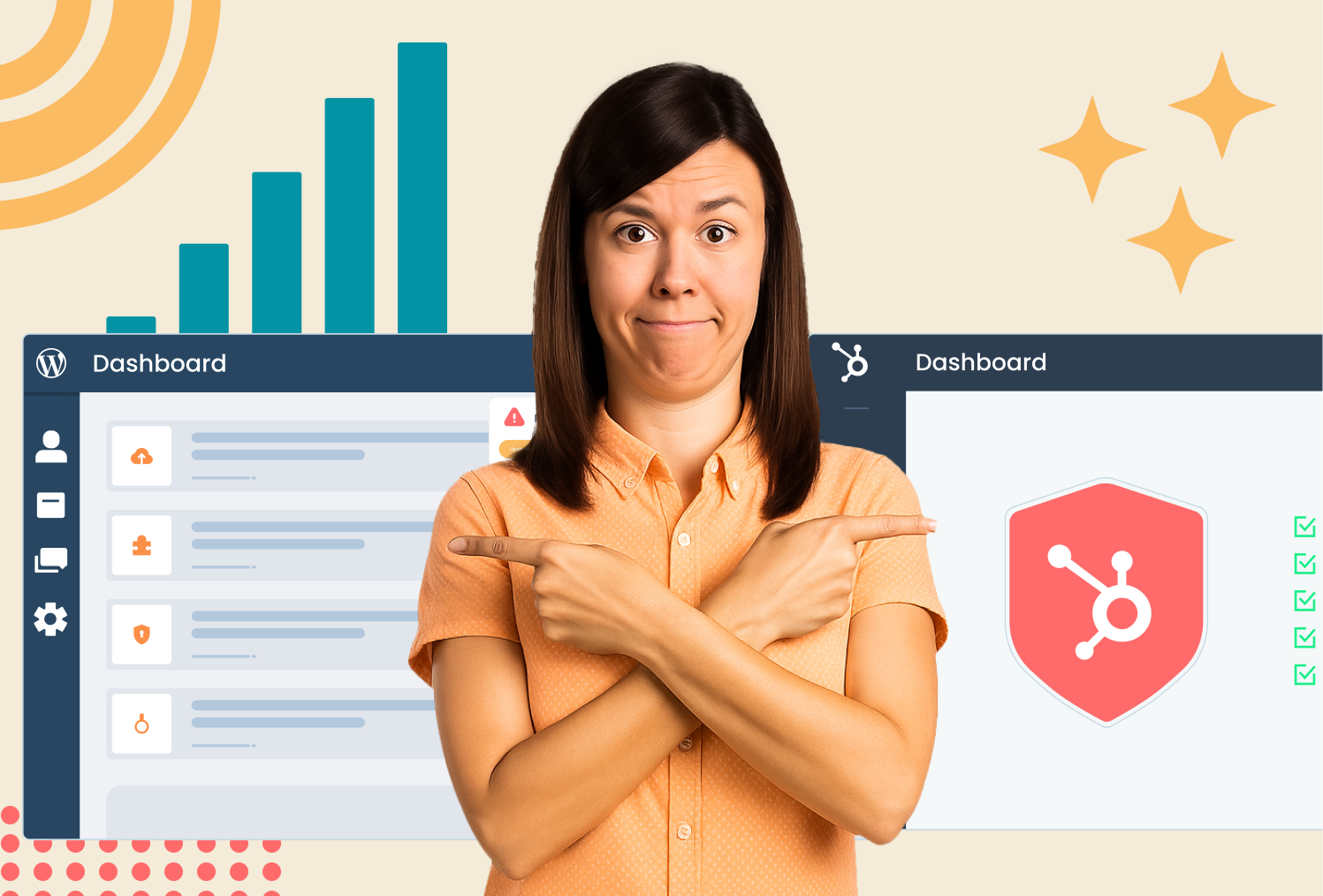Listen to the Blog
We’ve all been there. You click on a website, wait a few seconds, and before the page even loads… you’re gone.
Now flip that around. If your own website takes more than three seconds to load, half your visitors might already be leaving. That means fewer leads, fewer sales, and more frustration for your marketing team.
The question is: why is your website slow?
From bloated themes to plugin chaos, there are several common culprits. Let’s break down the five most likely reasons your site is underperforming and how HubSpot CMS helps you address them.

Why Your Website Loads Slowly?
-
Too Many Plugins
If you’re on WordPress, you probably know this pain. Need SEO? Install a plugin. Need forms? Another plugin. Need analytics? Yet another one.
The average WordPress site runs 20–30 plugins. That’s 20–30 extra sets of code loading every time a visitor lands on your site. Multiply that by hundreds of users, and you’ve got a recipe for lag.
How HubSpot Fixes It:
HubSpot CMS comes with built-in SEO, forms, analytics, CRM integration, and email marketing tools. No plugin jungle. No performance drain. Just a site that works, right out of the box.
-
Bloated Themes and Page Builders
Those multipurpose WordPress themes with 100+ design options? They sound great, until you realise you’re loading a ton of unused code on every page. The same goes for third-party page builders: they add flexibility, but they can also slow down your site.
How HubSpot Fixes It:
With HubSpot, you can create custom frontend modules that are clean, lightweight, and reusable. Marketing teams get the drag-and-drop flexibility they need, but without the “code bloat” that kills speed.
-
Weak Hosting
If you’re paying $5/month for hosting, your site is probably sharing server space with thousands of others. During peak times, that cheap server gets overloaded, and your site slows to a crawl.
How HubSpot Fixes It:
HubSpot CMS includes enterprise-grade hosting and a global Content Delivery Network (CDN). That means your site loads fast anywhere in the world, with no separate hosting plan to manage.
-
Oversized Images & Media
If you upload massive, uncompressed images, they’ll choke your site speed. Throw in a couple of auto-playing videos, and your visitors are in for a long wait.
How HubSpot Fixes It:
HubSpot automatically compresses and optimises images. Combine that with CDN delivery, and your content loads quickly, even with high-quality visuals.
-
Endless Maintenance
Slow sites aren’t just about speed, they’re about stability. On WordPress, if you miss a plugin update, you risk performance issues or worse, security breaches. Keeping everything patched eats time and money.
How HubSpot Fixes It:
HubSpot handles SSL, security, and updates in the background. No plugins, no patching, no late-night “site down” emergencies. Just peace of mind.
A Real Example
A client we worked with had a WordPress site that loaded in 5.2 seconds. After migrating to HubSpot with a custom frontend setup:
- Load time dropped to 1.9 seconds
- Bounce rate decreased by 18%
- Conversions improved by 22% within the first month

That’s the difference between a site that loses leads and one that drives growth.
Conclusion
A slow website is more than a technical issue; it’s a business problem. Every second of delay is a lost opportunity.
If your site takes longer than three seconds to load, it’s time to rethink your CMS. With HubSpot CMS + custom frontend development, you get speed, reliability, and a site built to convert.



_%20The%20Hidden%20Costs%20Explained.png)



%201.png?width=1016&height=912&name=image%20(54)%201.png)